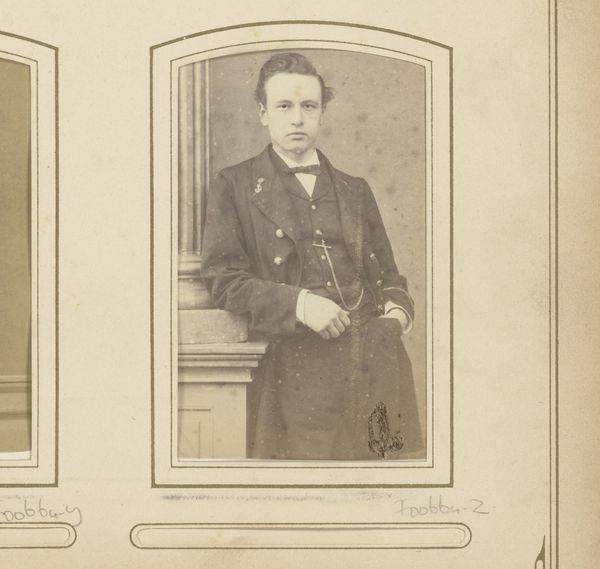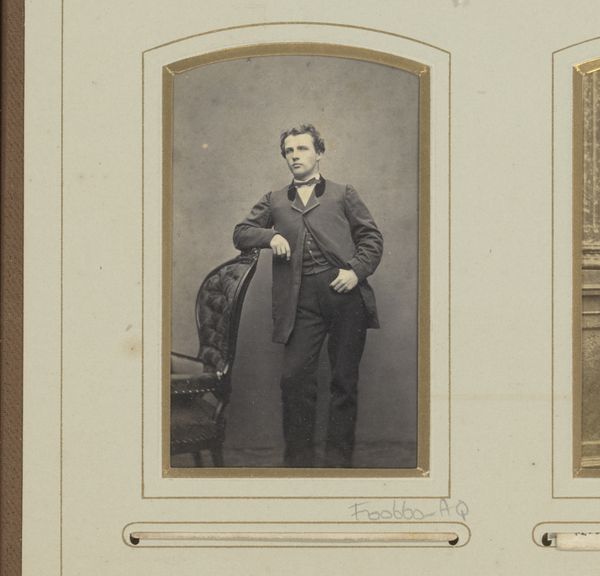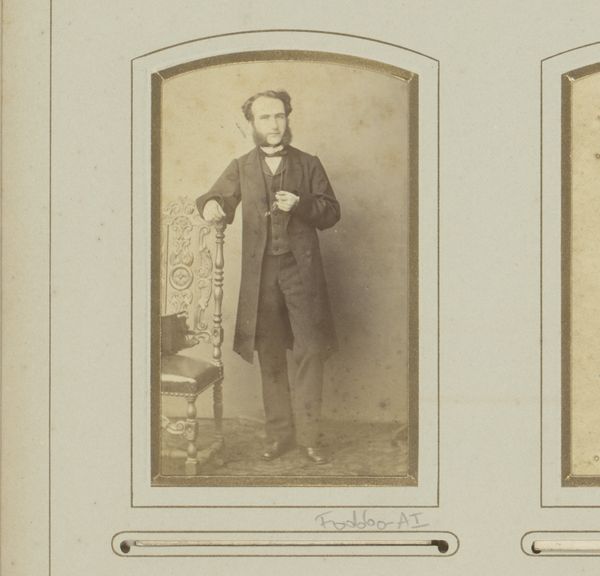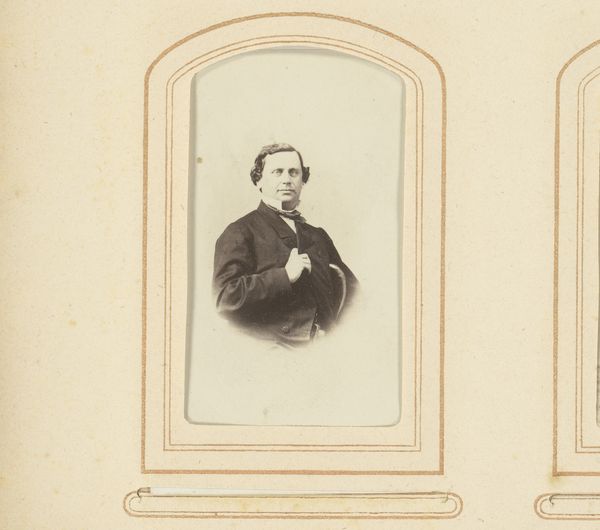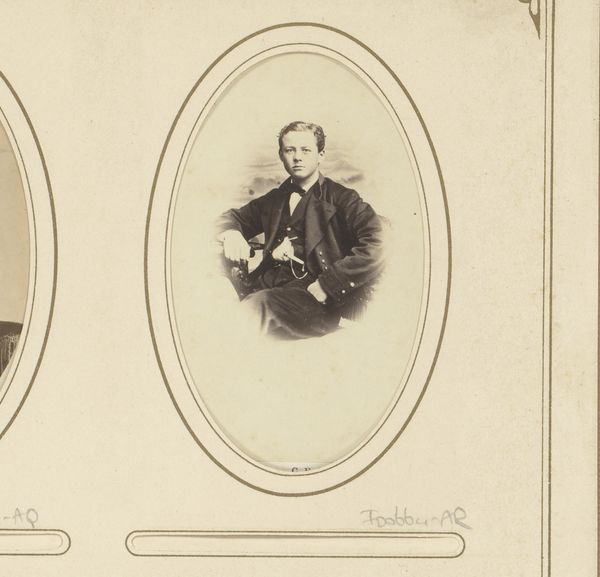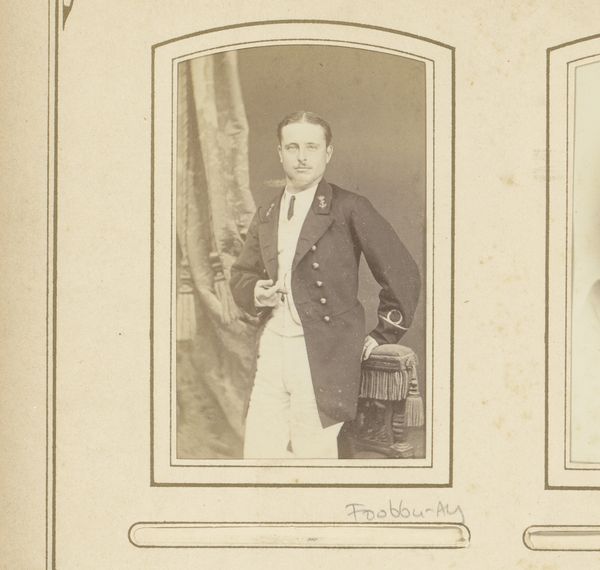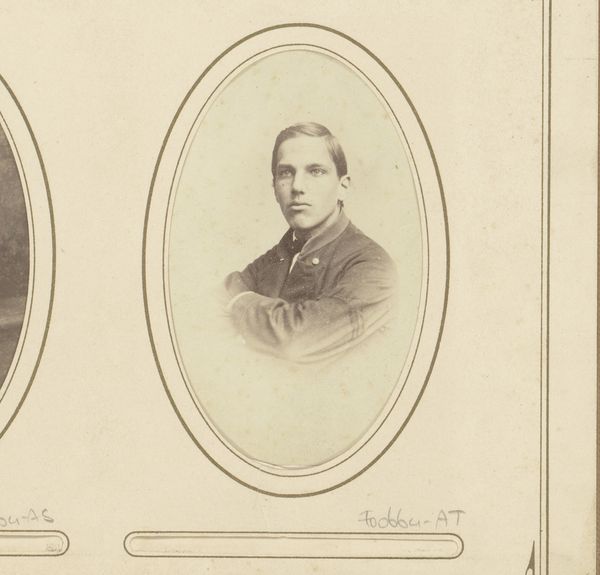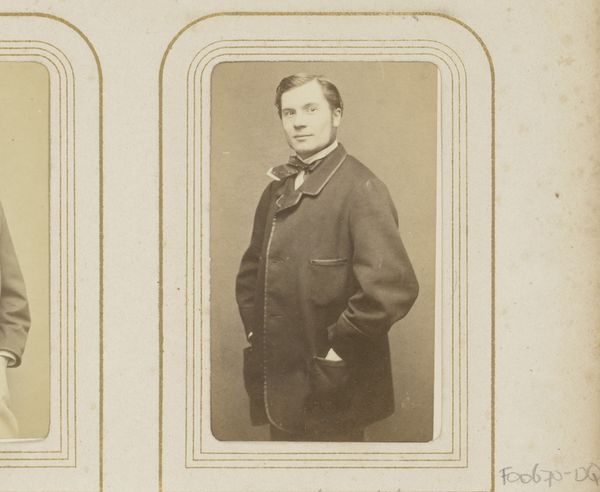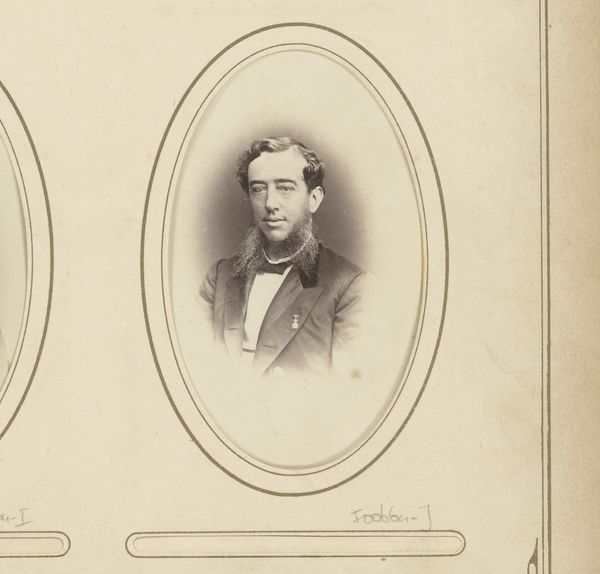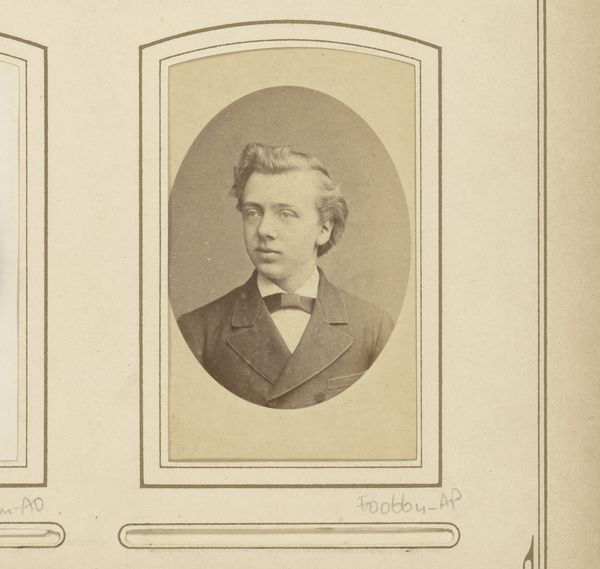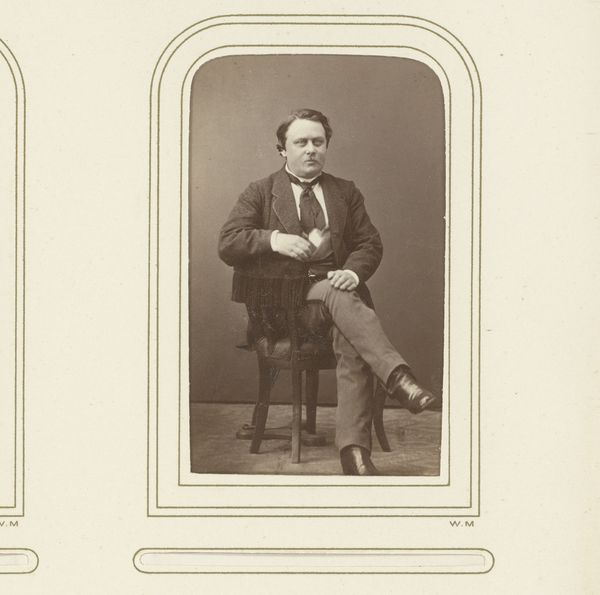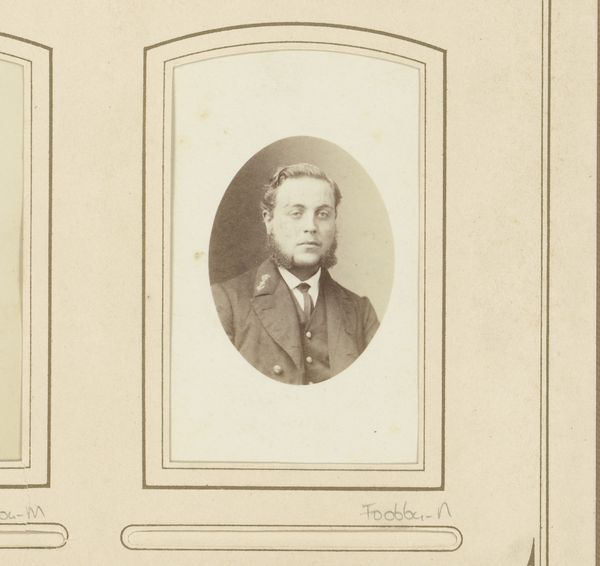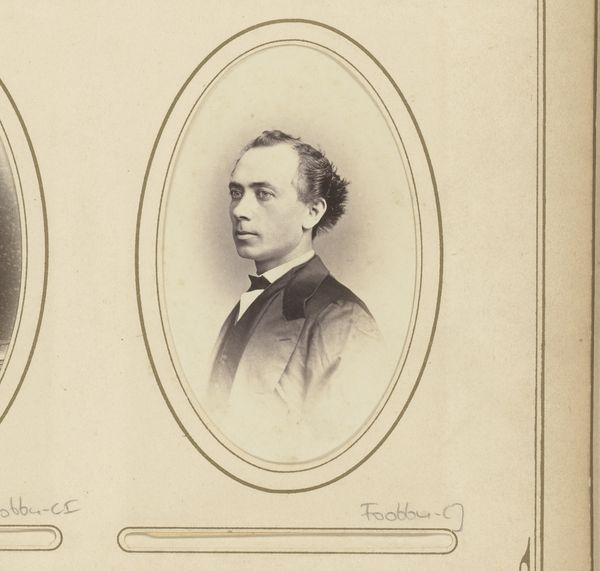
photography, gelatin-silver-print
#
portrait
#
16_19th-century
#
photography
#
historical photography
#
gelatin-silver-print
#
19th century
#
realism
Dimensions: height 85 mm, width 51 mm
Copyright: Rijks Museum: Open Domain
Curator: I am immediately struck by the young man's rather solemn gaze. He seems to carry the weight of the world on his shoulders, despite his youth. Editor: Well, let's unpack this serious image, a gelatin silver print from around 1869 attributed to Albert Greiner, currently residing in the Rijksmuseum. It’s titled "Portret van een jongeman met insignes op jas," which translates to "Portrait of a young man with badges on his jacket." The details, of course, matter greatly to social and political interpretations. Curator: The badges indeed suggest membership in some kind of organization, maybe even a military or fraternal order. They could represent a rite of passage, and explain his solemn expression, this gravity reflecting his new responsibilities, but maybe even anxieties of stepping into adulthood. It reminds us how portraits were historically loaded with aspirations of portraying success and lineage, beyond merely likeness. Editor: Absolutely. We often see such portraits in terms of individual achievement, yet they functioned institutionally, asserting social identities, communicating professional status and values of duty, even nationhood, crucial in the 19th-century solidification of national identity and belonging. Think about the relationship between the subject and the sitter here: do the accouterments communicate belonging or an imposition of roles and expectations? Curator: That's an astute point; his stance seems almost defensive, slightly leaning on the ornate chair—or should I say leaning _against_ it, for balance. A physical manifestation of a leaning into something one doesn't yet feel comfortable in! Even something seemingly simple like how one posed reveals a deep ambivalence toward self and identity. Editor: His attire isn't just about aesthetics; it signifies class, allegiance, and perhaps even personal ambition. Think about how this portrait would have been circulated and interpreted. Who was this young man meant to impress? Who was in the photographer’s circle who might seek out this portrait of "type of man"? Was it more about self-promotion or institutional affirmation? Curator: It truly encourages one to wonder about his place within this larger structure! A visual encapsulation of both individual identity _and_ cultural belonging, all caught in this small photograph that continues to invite questions. Editor: Exactly. Next time, maybe, let’s explore some works from his studio to investigate a trend. Thank you for your insights!
Comments
No comments
Be the first to comment and join the conversation on the ultimate creative platform.
